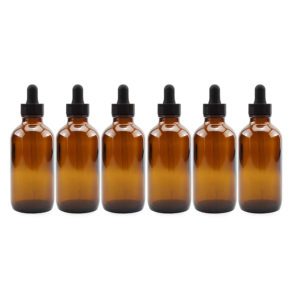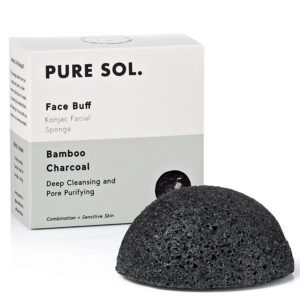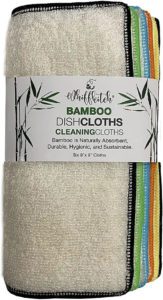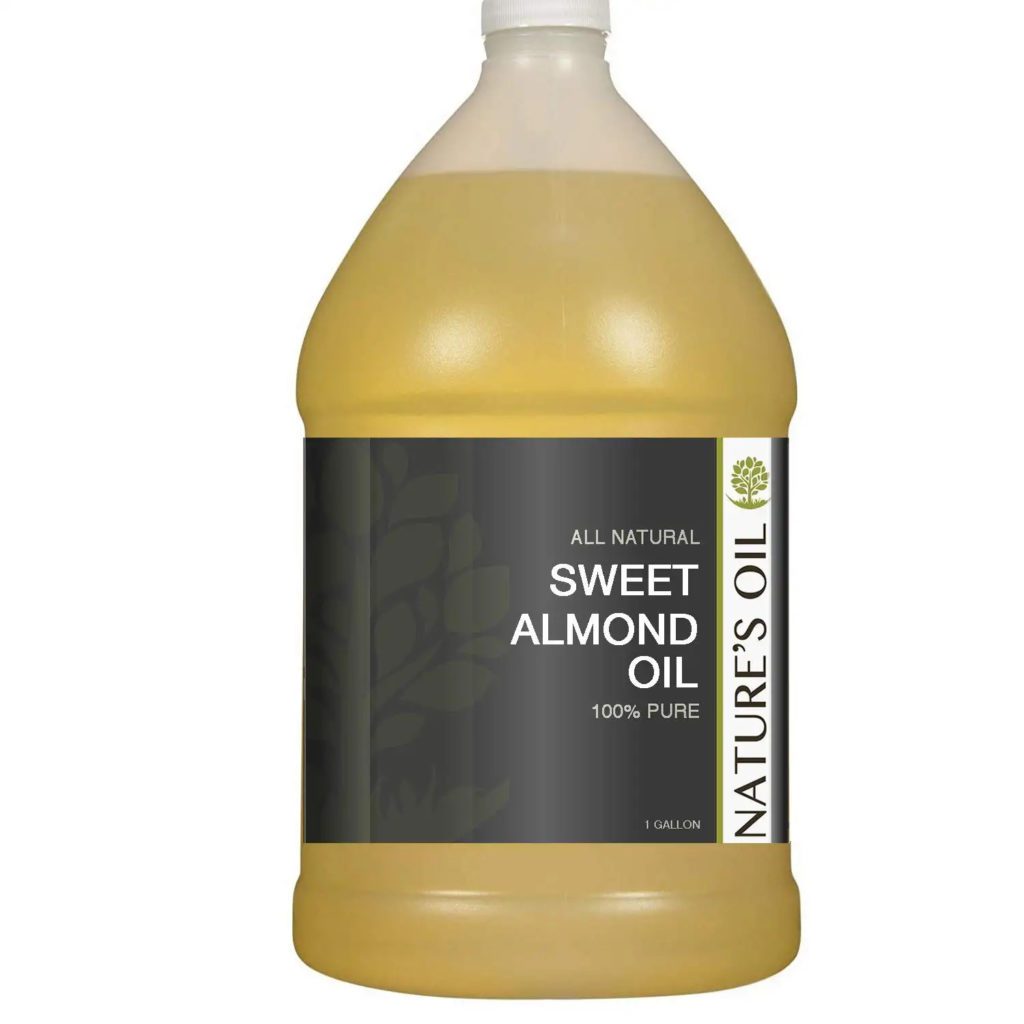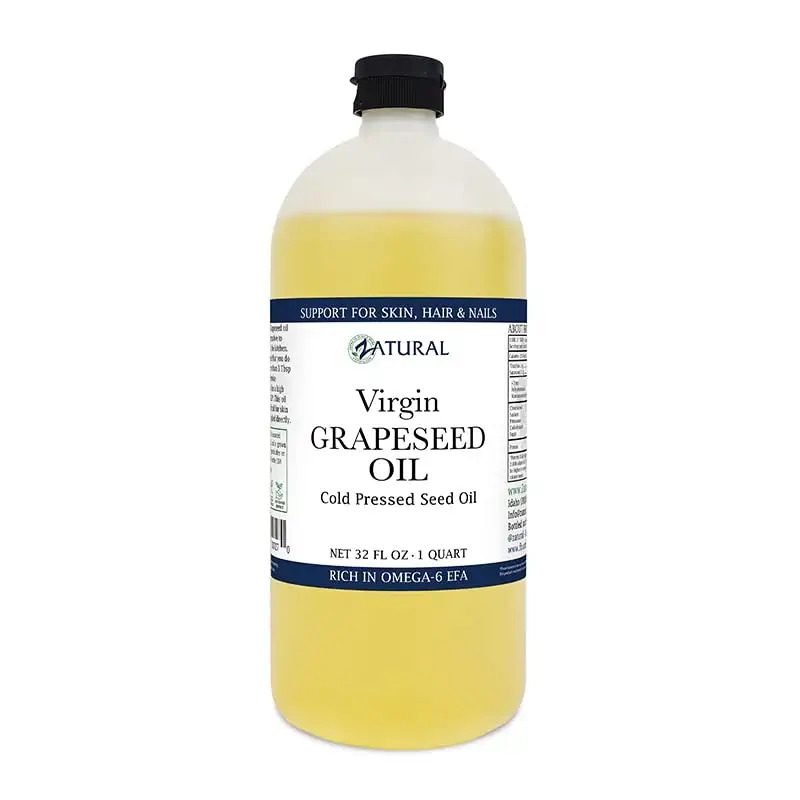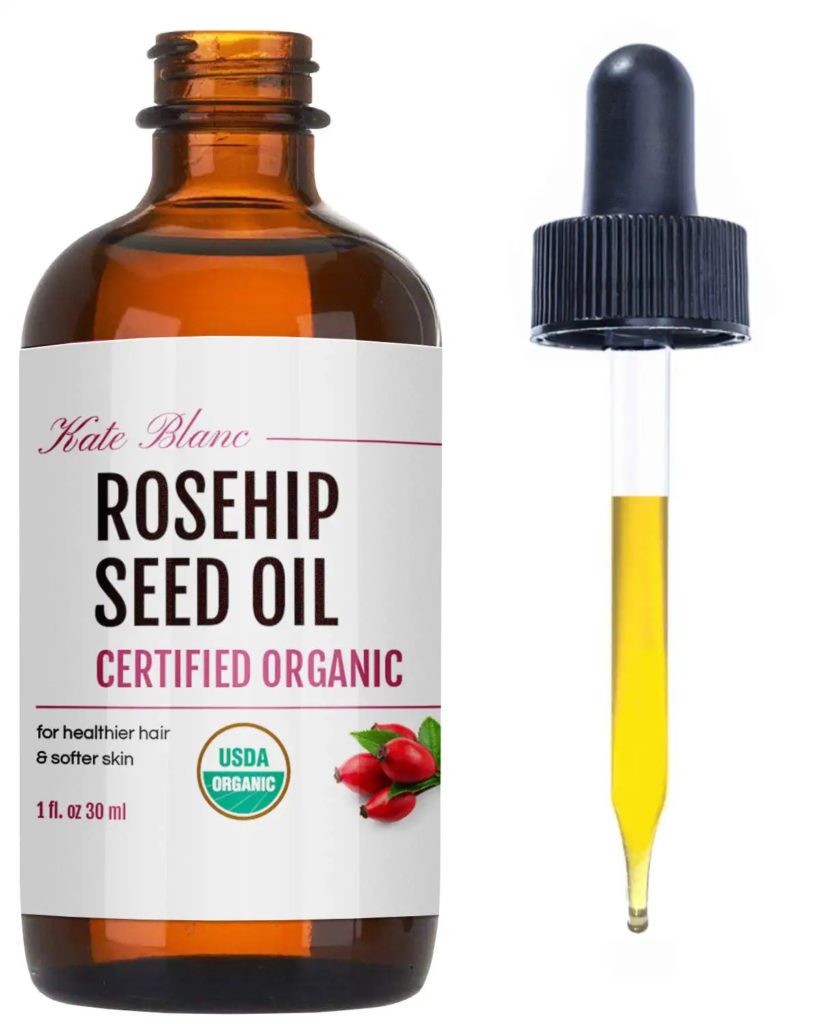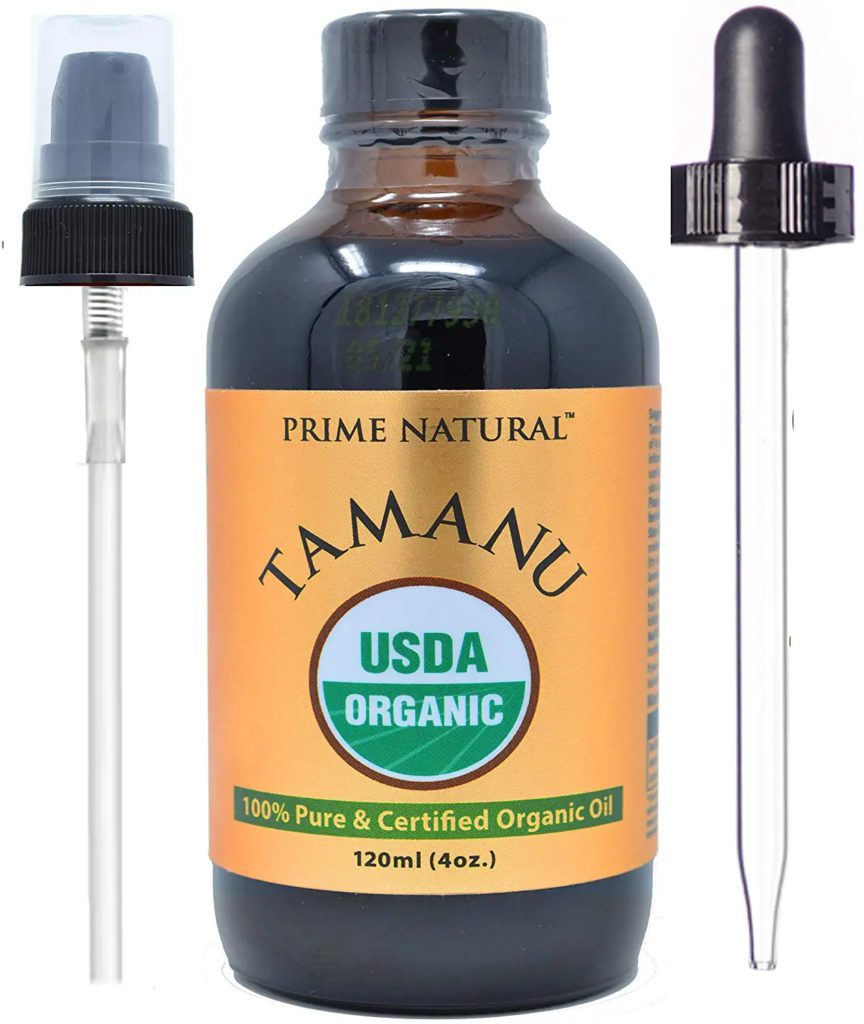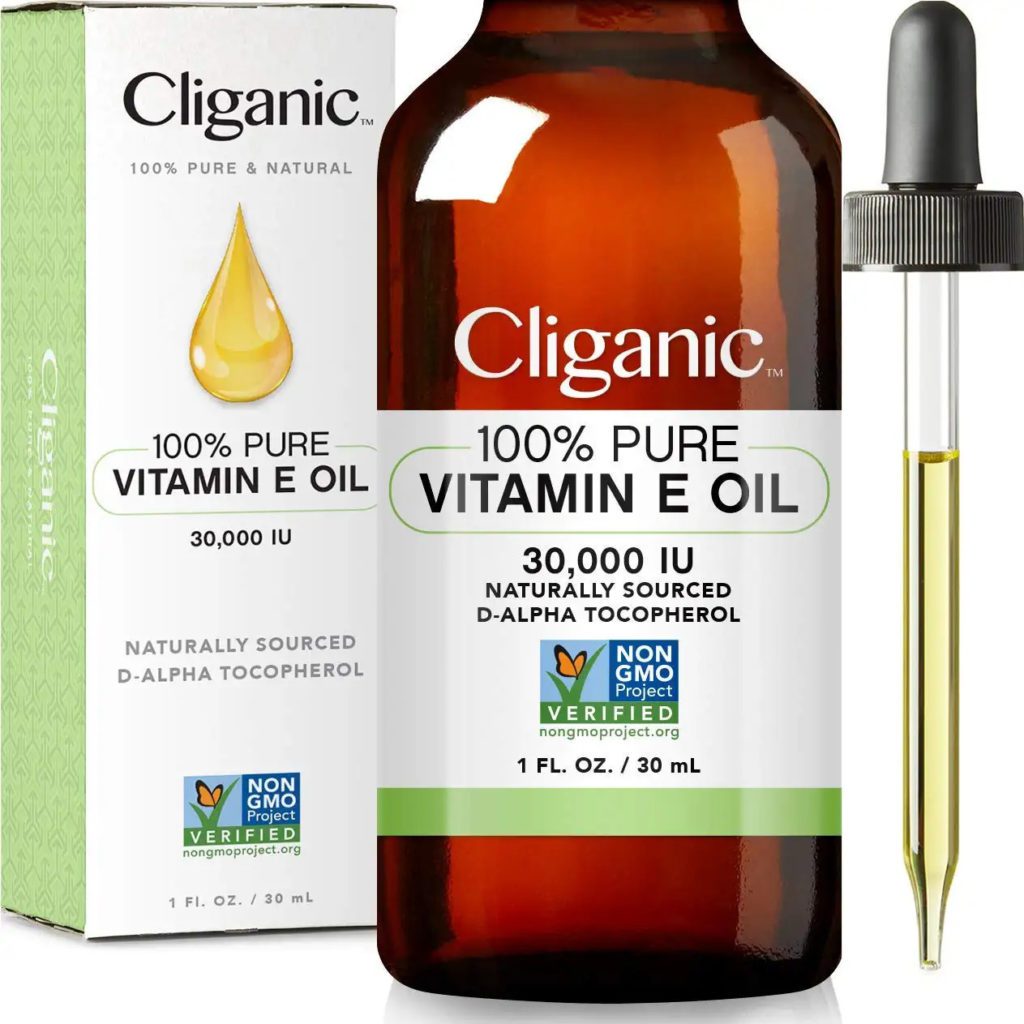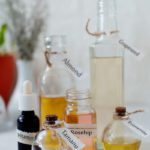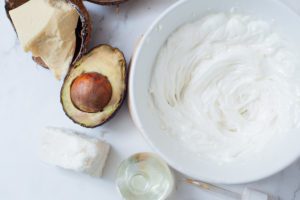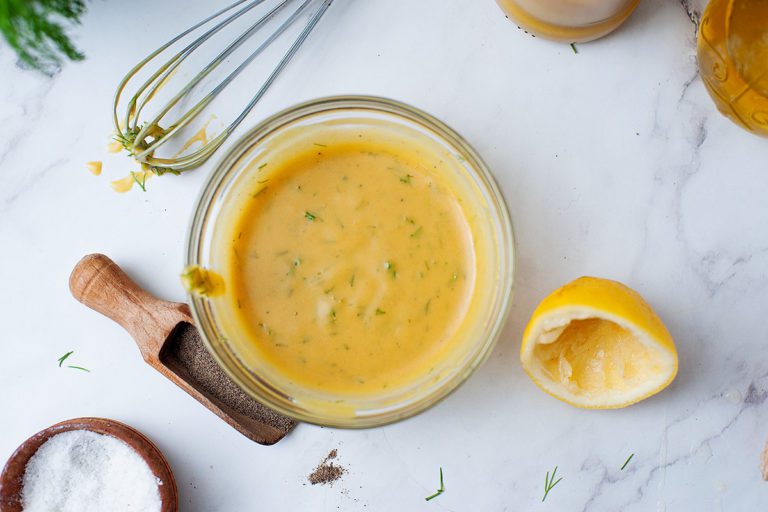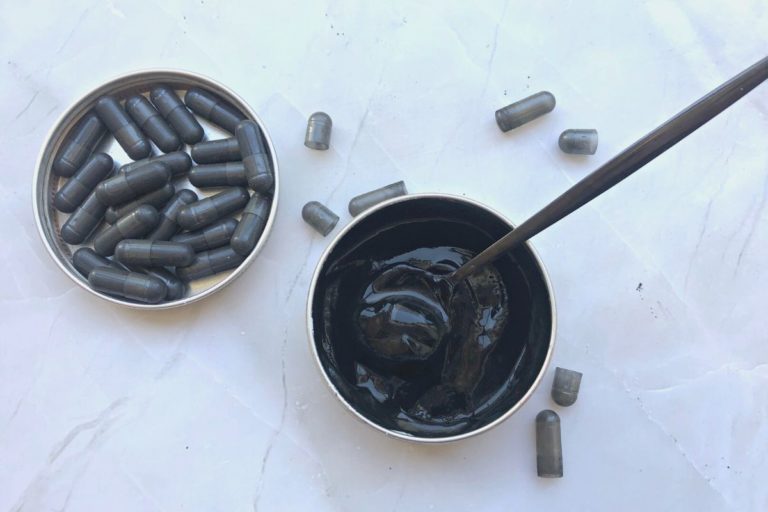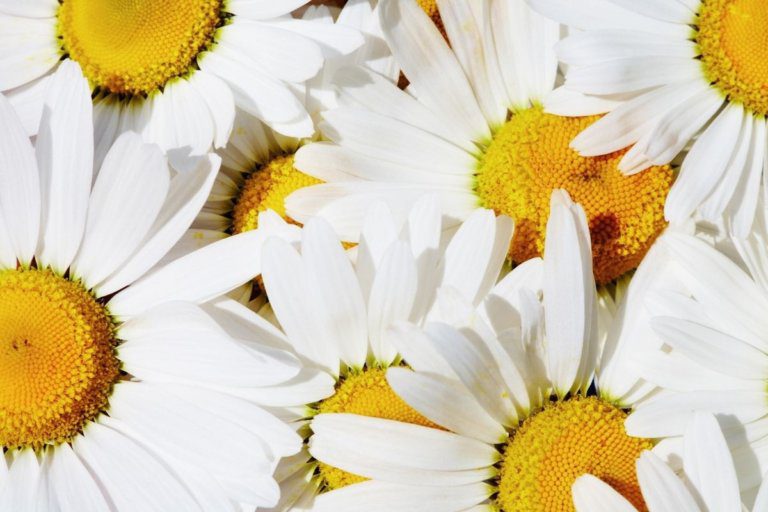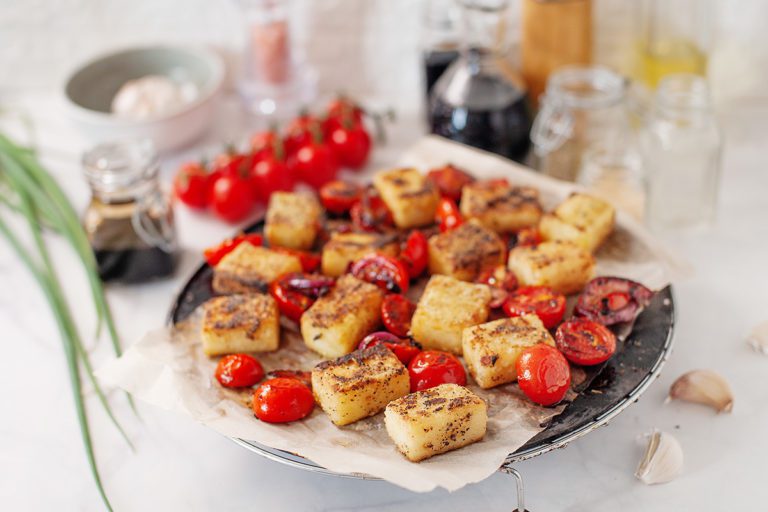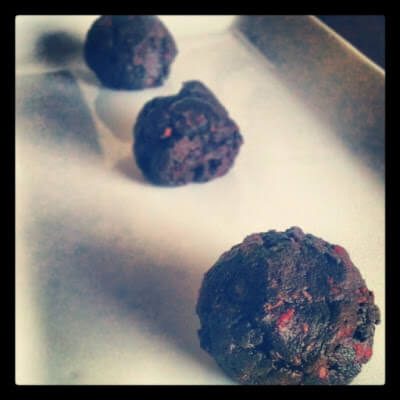I’ve been using the oiling cleansing method since high school, when my mom first introduced me to DHC. I have always had very sensitive skin and so most facial cleansers on the market irritated my skin more than helped it.
When I used the oil facial cleanser by DHC, however, my skin sang a quiet rejoice.
I’ve been using oil on my skin ever since.
The truth is that most oils will get along with your skin (except coconut oil, which causes breakouts for me). I recommend trying a few types out based on your skin type, and even combining a few types of oils for your own healing oil blend.
I’ll speak from my own experience and give you a few tips for creating your own DIY cleansing oil.
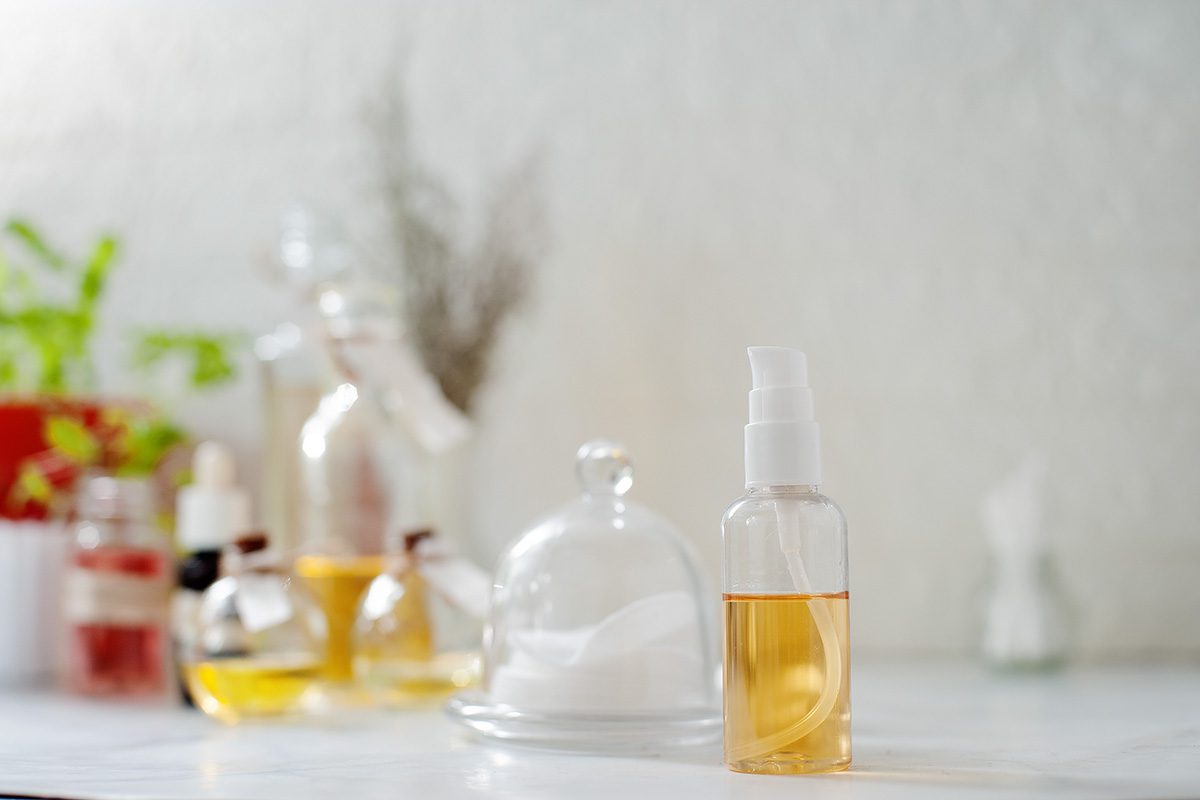

How to make your own homemade cleansing oil
Everyone has different skin types, so what may leave my skin feeling soft and calm may not leave your skin feeling the same way. So when choosing the best carrier oils for your oil cleanser, it really comes down to your own skin type and how your skin reacts to different oil blends.
A few tips when making your first homemade oil cleanser:
- Start small. Because our skin reacts differently to things, it’s best to start with small amounts when you start oil cleansing and making your own oil cleanser. This gives you space to find an oil blend that is perfect for your skin.
- Use amber glass bottles. Plastic containers have PFAs and clear glass can let sunlight in, causing the oil to go rancid. Amber glass bottles help store your oil cleanser safely.
- Exfoliate dead skin cells. Many people like to use a facial sponge, like a konjac sponge, to exfoliate dead skin cells when oil cleansing. Sometimes I like to do this before applying the oil and sometimes after. If you want an amazing exfoliator, then try my homemade face scrub. I swear you will love it.
- Dry with microfiber towel. I use a microfiber towel to pat myself dry after cleansing.
As for what to put in your own cleansing oil recipe, here are a few things to know before you begin.
Carrier and supplemental oil options
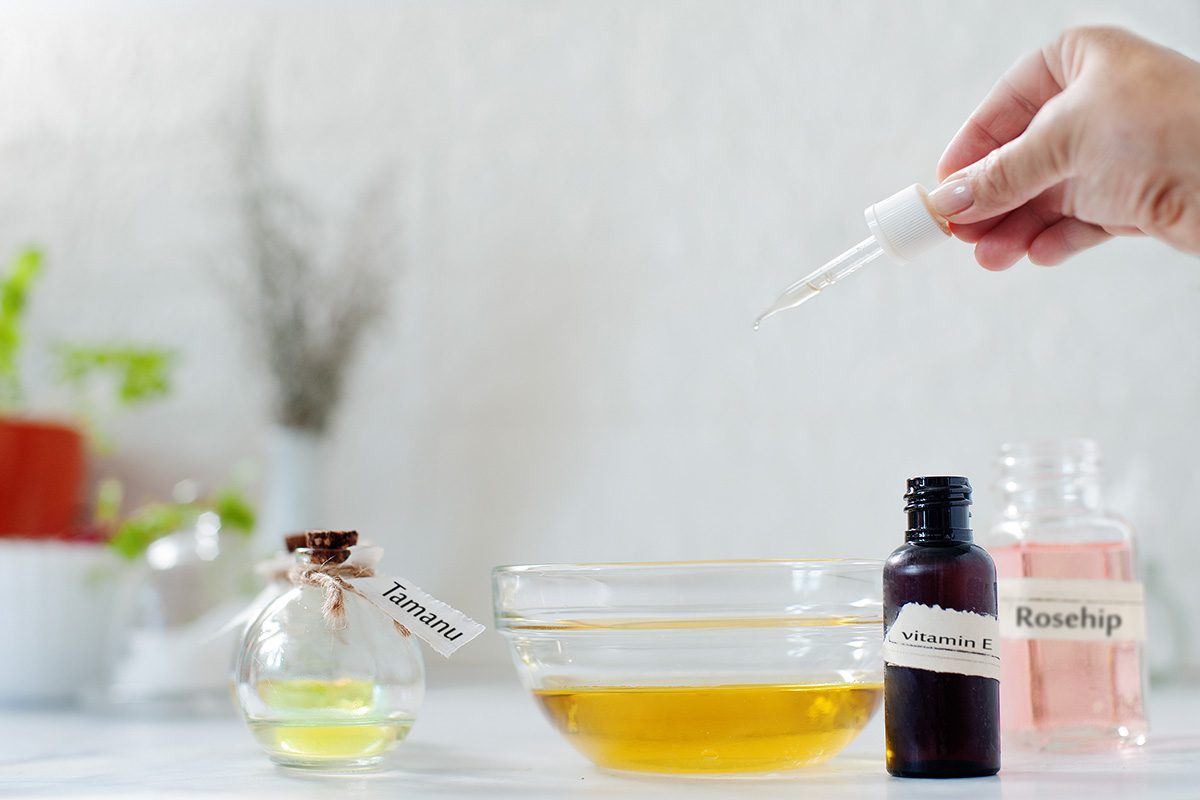

Almond oil (my favorite carrier oil)
When I first moved to Queensland, Australia, the humidity did a number on my skin. Apparently I’m very allergic to mold and my skin proudly communicated this boundary to me (aka eczema flare ups). I met with a local naturopath and she gave me an herbal tincture plus instructions to use sweet almond oil as a moisturizer. Within a few weeks, my flare up had calmed itself and I’ve used almond oil ever since.
This naturopath knew what she was talking about. Studies show that almond oil both reduces itching in eczema patients and also effectively treats dermatitis.
Key takeaway: If you’ve got sensitive skin, eczema, or dermatitis, then almond oil is a great base carrier oil for you.
Grapeseed oil
Grapeseed oil softens the skin and increases elasticity, which, as an eczema-prone millennial, I am all about. How? The essential, unsaturated fatty acids in grapeseed oil, plus its antioxidant properties, make it a hydrating and soothing oil for the skin. The antioxidants in grapeseed oil are impressive enough. The vitamin E alone is one skin-preserving compound that makes this a popular oil in skincare recipes.
Key takeaway: You’ll like grapeseed oil if you want softer skin, have wrinkles, or need extra moisture.
Rosehip seed oil
Rosehip seed oil helps soothe inflammatory skin conditions, such as eczema and cheilitis. When ingested, rosehip powder can improve wrinkles and cell longevity, which slows the signs of aging on the skin. When applied topically as rosehip seed oil, it can help scar tissue healing, which is interesting for acne-prone skin. I like including this in my base carrier oils because, well, it’s exactly what I need.
Key takeaway: Rosehip seed oil helps with wrinkles and scar healing.
Evening primrose oil
Evening primrose oil helps dry, itchy, scaly dermatitis (um hi, it me) as well as moisture retention, elasticity, firmness, fatigue resistance and roughness.
Key takeaway: Use this oil if you have some kind of flare up.
Tamanu oil
Tamanu oil has long been used for wound healing and general skin issues. Data shows that it modulates gene expression in skin cells, causing them to duplicate, produce collagen, and heal wounds. 🤯 So yeah, I add that bad boy into my oil cleanser mixes.
Key takeaway: This is good for everyone.
Vitamin E oil
Vitamin E is a known preservative in homemade skincare, so I always add a drop into any batch of oil I make. I also like applying it directly to flare ups because it seems to soothe them without wearing away easily.
Key takeaway: Use this to preserve your mix (and your skin.)


Essential oil options
I love using essential oils for facial steaming and refreshing facial tonics, so it makes sense that I like to add them to my facial oils as well. These are the usual essential oils that I add to my skincare routine:
- Rose. Rose oil has antimicrobial properties and has calming effects, so I love including it in basically everything I make.
- Clary sage. Clary sage has antimicrobial properties, making it an effective treatment for wounds and skin infections.
- Frankincense. Frankincense helps with skin inflammation and regeneration.
- Ylang ylang. Ylang ylang is known to help acne by balancing the skin’s natural oils, especially excess sebum. It also soothes dermatitis and eczema, can be used in general care, and is an astringent oil suited for greasy and oily conditions, insect bites, or used as a toner.
- Sandalwood. Sandalwood has been shown to help treat acne, psoriasis and eczema. The antioxidants in sandalwood help maintain moisture and elasticity in the skin.
- Lime. As a citrus, lime essential oil is best known for its antioxidant properties, including Vitamin C. As such, it is known to treat acne, bacterial infections, congested or greasy and oily conditions, cuts, insect bites, sores, ulcers, and wounds
- Carrot seed. Having both antibacterial and antioxidant properties, carrot seed essential oil is good to add to any cleansing oil recipe that treats acne prone skin.
- Geranium. Geranium essential oil has antimicrobial, antiseptic, and antibacterial properties, making it a common treatment for acne prone skin. It also has anti-inflammatory effects, which I like for my sensitive skin.
- Lavender. Lavender essential oil helps heal wounds, soothes eczema, and fights acne. Learn how to make your own lavender essential oil.
- Tea tree. Tea tree essential oil soothes dry skin and eczema by reducing itching and irritation. It improves all skin types, balancing excess oil in oily skin and reducing irritation in extremely dry skin. It’s also known for its wound healing properties and anti-inflammatory properties in some occasions.
4 Cleansing oil recipes for the skin
- Oily or acne-prone skin. Almond oil will replicate your skin’s natural oils, rosehip oil will heal acne wounds, and grapeseed oil will help prevent future breakouts with its antioxidant activity.
- Dry or eczema-prone skin. My personal cleansing oil recipe below is what I recommend: almond oil, grapeseed oil, rosehip oil, tamanu oil, Vitamin E oil, and evening primrose oil. You can see in the pictures below what kind of impact it had on my skin 😍
- Mature or delicate skin. A combo of almond oil, rosehip seed oil, evening primrose oil, and grapeseed oil will improve elasticity and smooth roughness.
- Normal skin. Almond oil and Vitamin E oil are great nourishing oils that can be used as a base. Add any supplemental cleansing oils that you feel could help your skin type.
Before & After: How my face oil cleanser gave me glowing skin
Who this is for: I made this oil to soothe my perioral dermatitis, which is a special kind of face eczema that flares up when I’m in humid places, am stressed, and just before my period. Fun times. This combination is extremely soothing and doesn’t wear off easily, which I found to be the case for any other kind of moisturizer I tried during peak flare-ups.
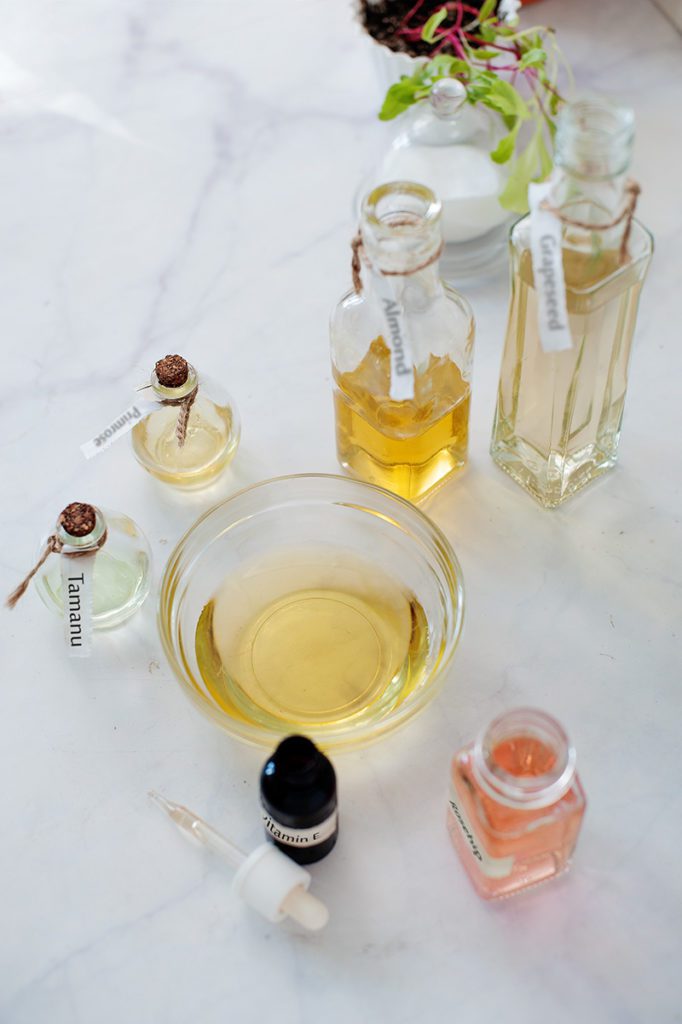

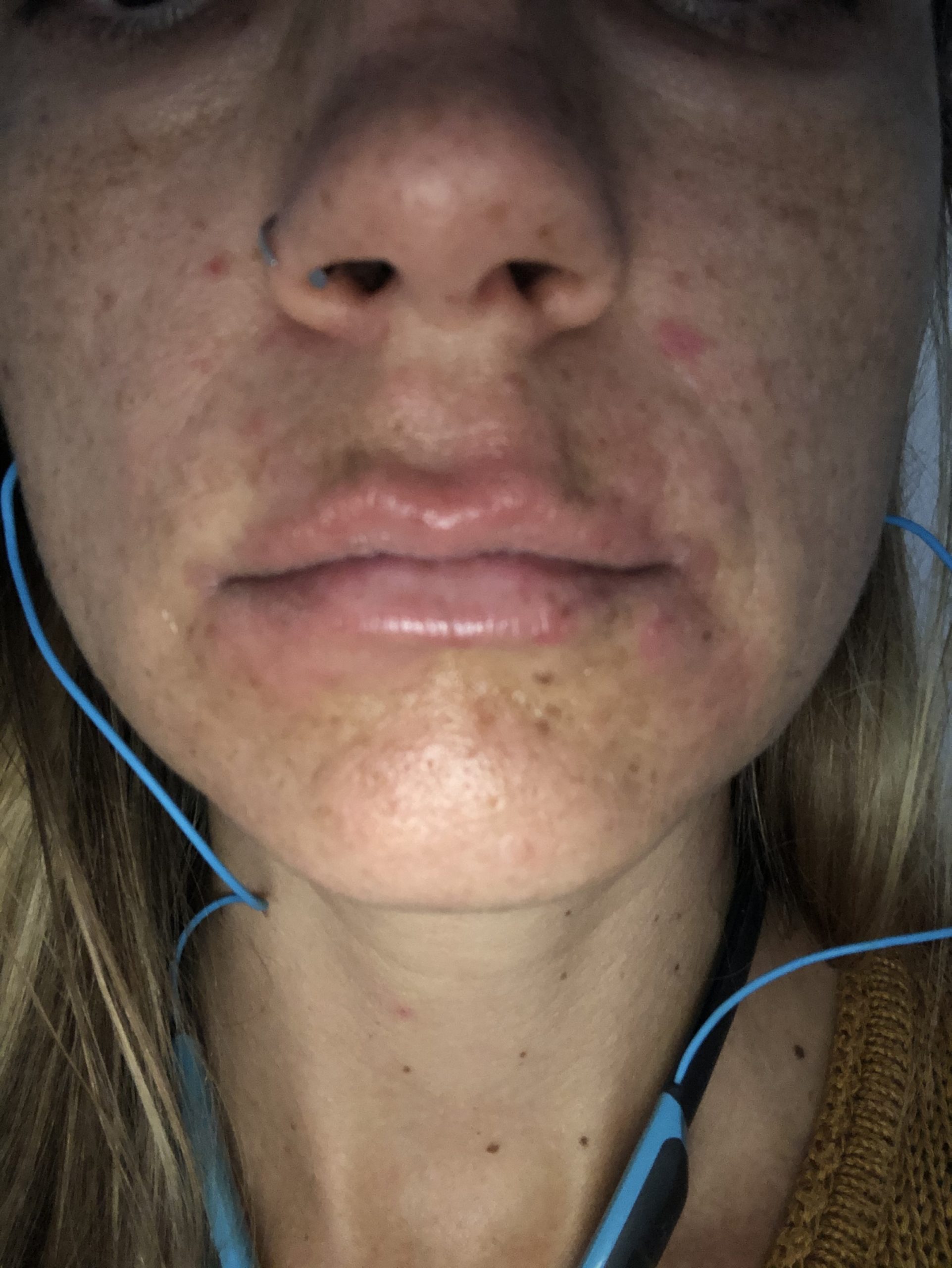

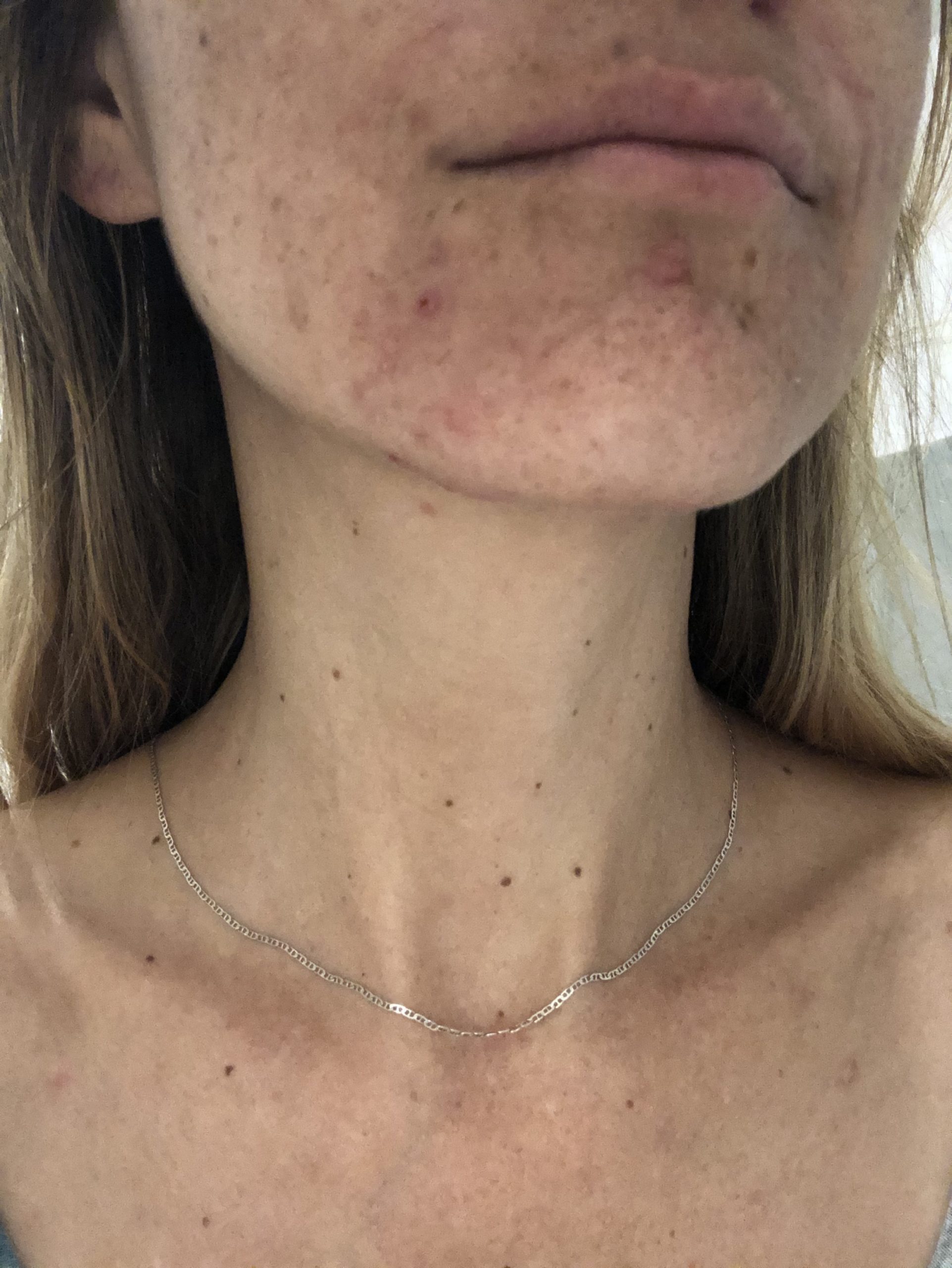

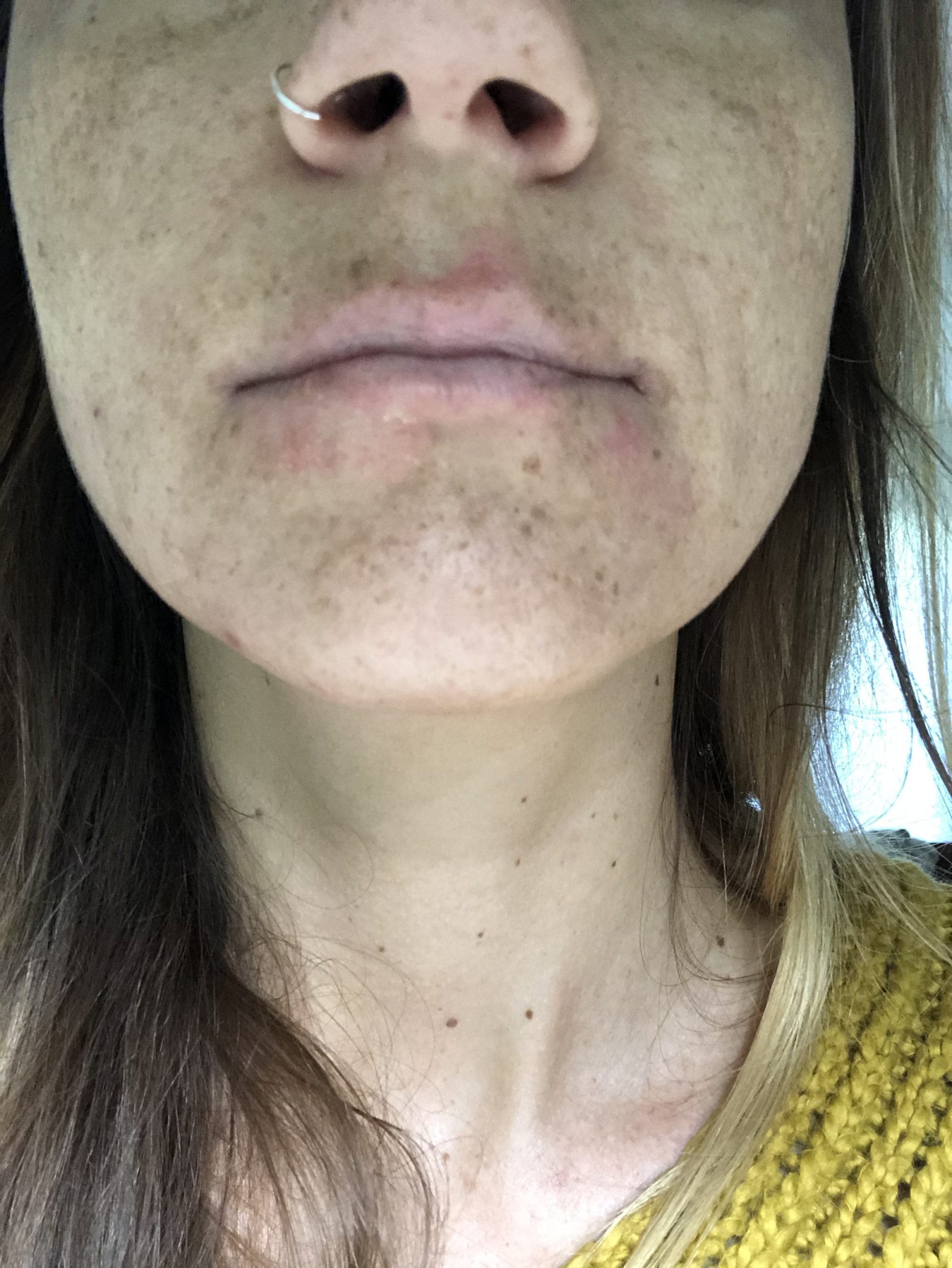

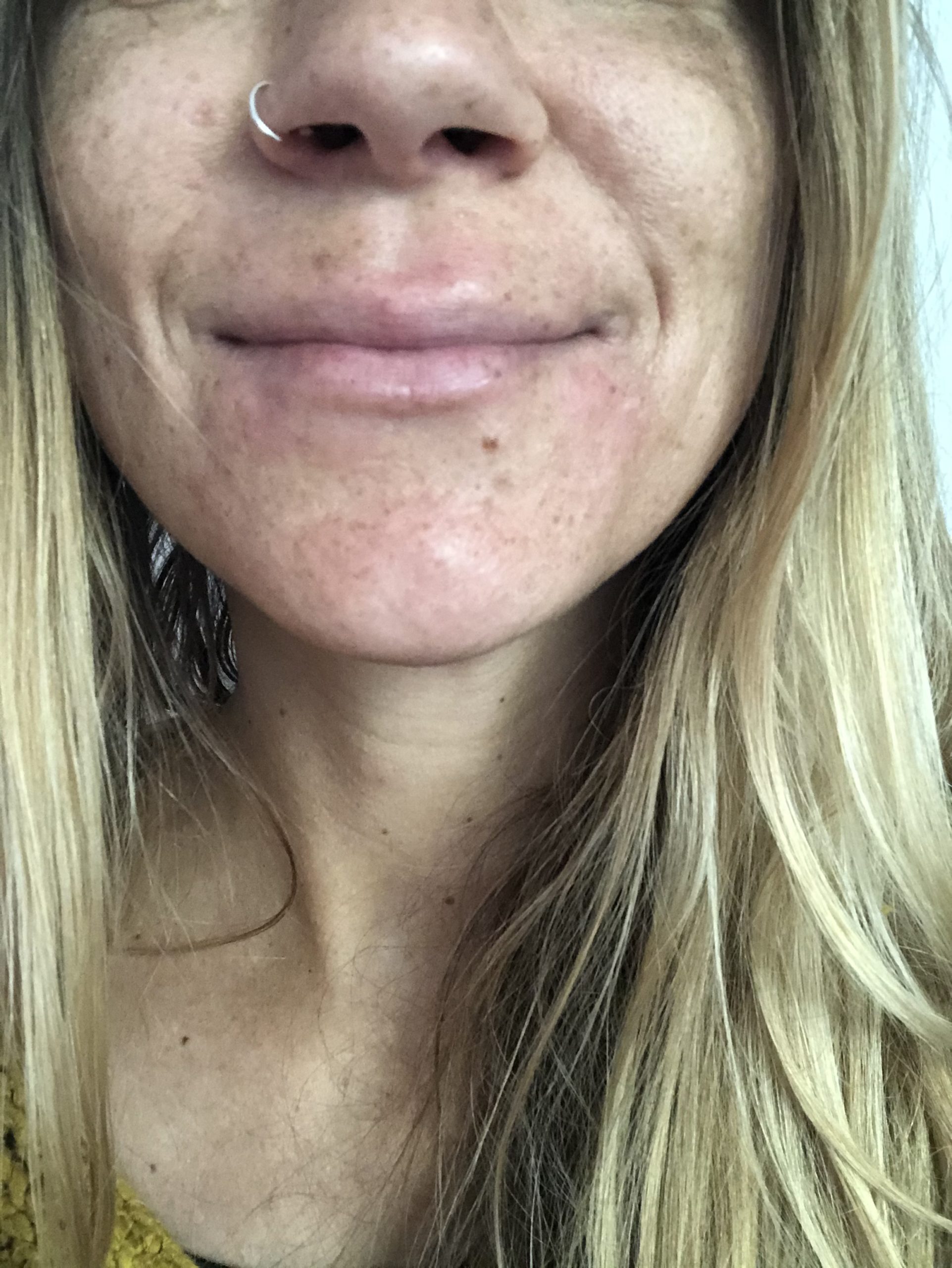

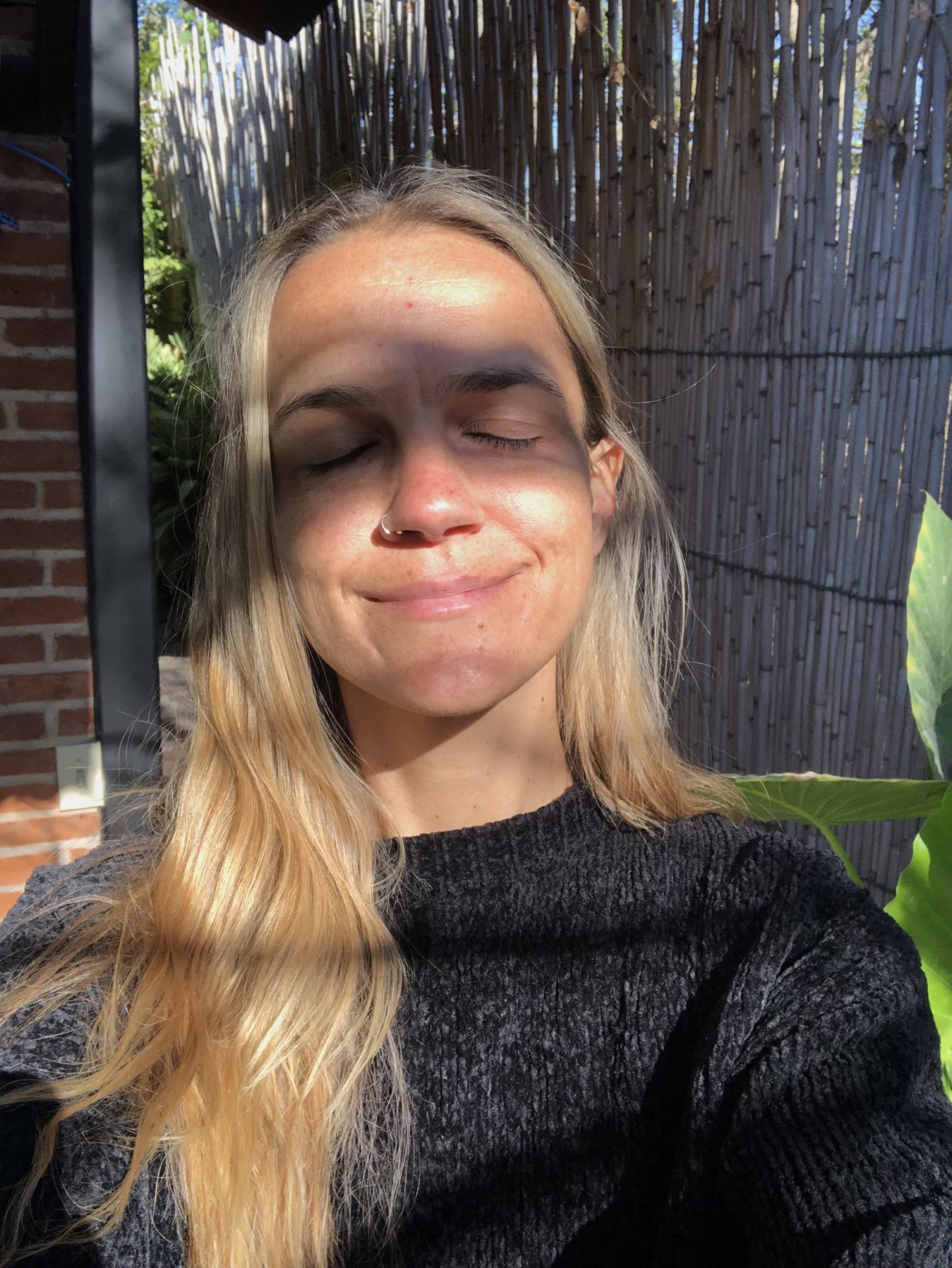

DIY face oil cleanser for eczema-prone skin
Equipment
Ingredients
- 2 parts sweet almond oil
- 2 parts grapeseed oil
- 1 part rosehip seed oil
- 1 part evening primrose oil
- 1 part tamanu oil
- 1 drop vitamin E oil
- 1/2 part glycerin optional for extra dry patches
Instructions
- Rinse face with warm water.
- Put a few drops of your homemade facial cleanser in the palm of your hand and rub your hands together. Rub your oily hands over your face, massaging the oil into the skin gently.
- If you're using an exfoliator to remove dead skin cells, then you can choose to exfoliate either before or after massaging your skin with oil.
- Rinse with warm water and pat dry with a bamboo micro fiber towel.
Tips for making a skin care routine for glowing, healthy skin
- Ditch the face wash and go with either warm water or an oil based cleanser to keep your skin healthy and supple.
- If you have clogged pores, then use a diy face scrub or reusable facial exfoliator to scrub away dead skin cells.
- You can try other oils for your own oil cleanser. A lot of people like jojoba oil and argan oil, but I found that these didn’t last long enough for my eczema-prone dry skin. Hemp seed oil and pumpkin seed oil are other nourishing oils you can add to your natural skincare routine, though I don’t have any experience with them myself.
- I love using essential oils in my natural skin care routine, but I avoid them when I’m having a flare up. Essential oils can burn on sensitive skin or even extremely dry skin, so use with caution and always dilute more than you think you need to.
- Always use high quality oils and research where your oils are sourced from, how they’re prepared, who is preparing them, how they are stored, and all that jazz. Not only will lower quality oils clog pores (they’re often cut with a cheaper and highly processed vegetable oil), but they also won’t have the healing effects you’re looking for. Always do your due diligence to source high quality oils.
